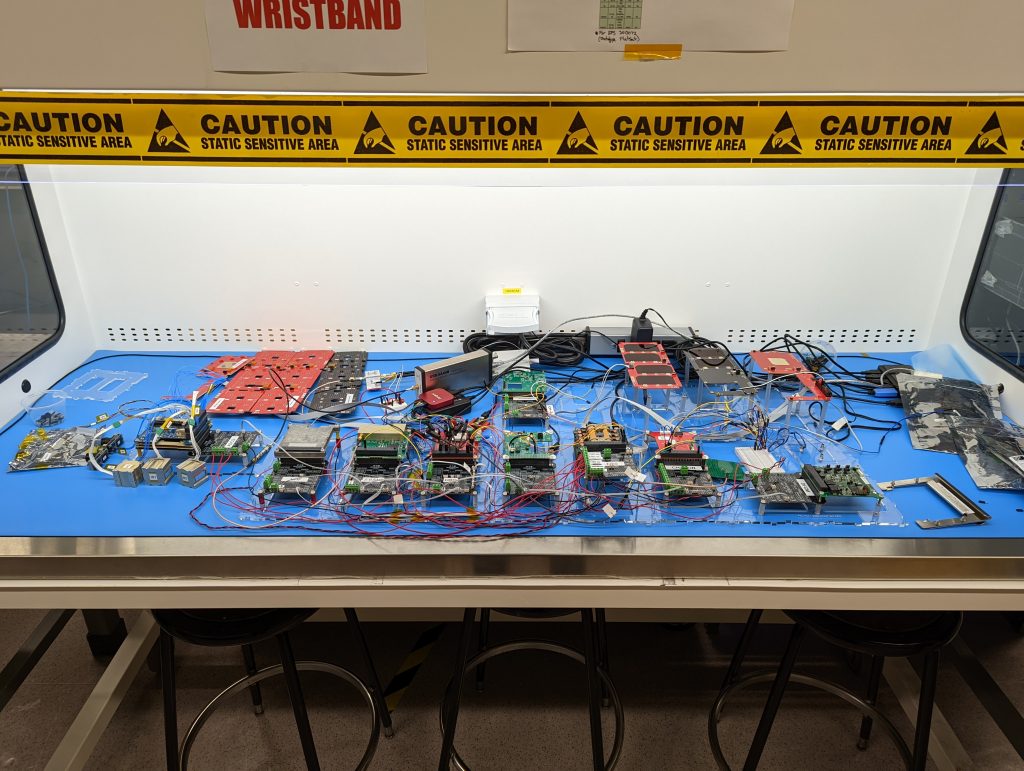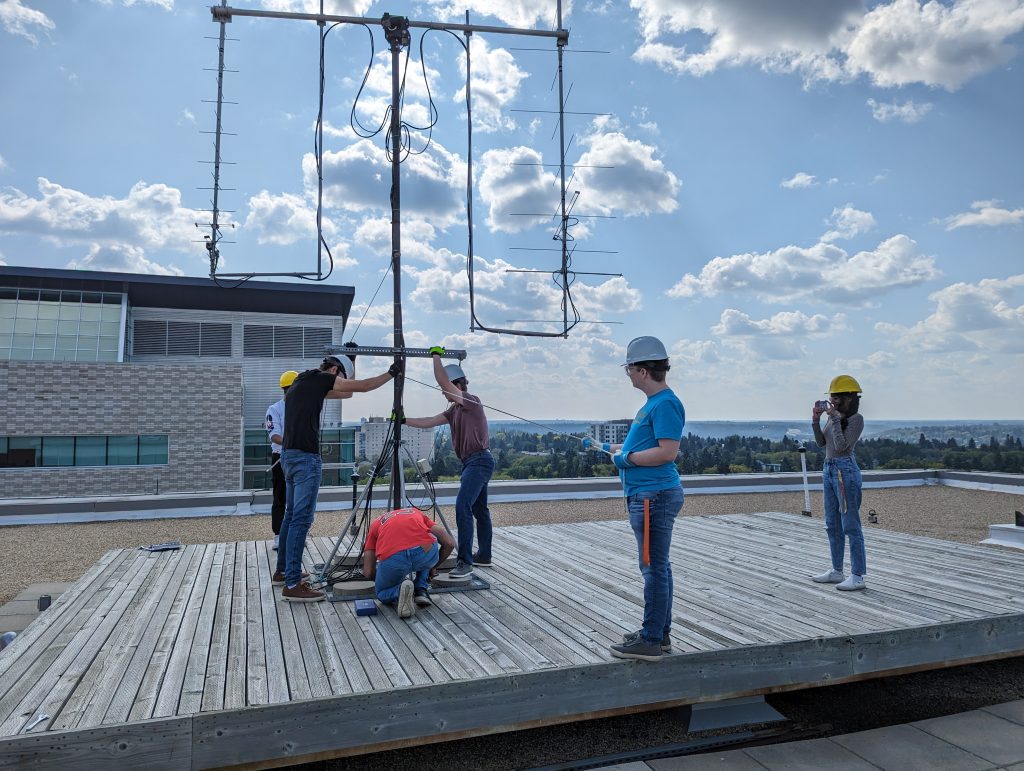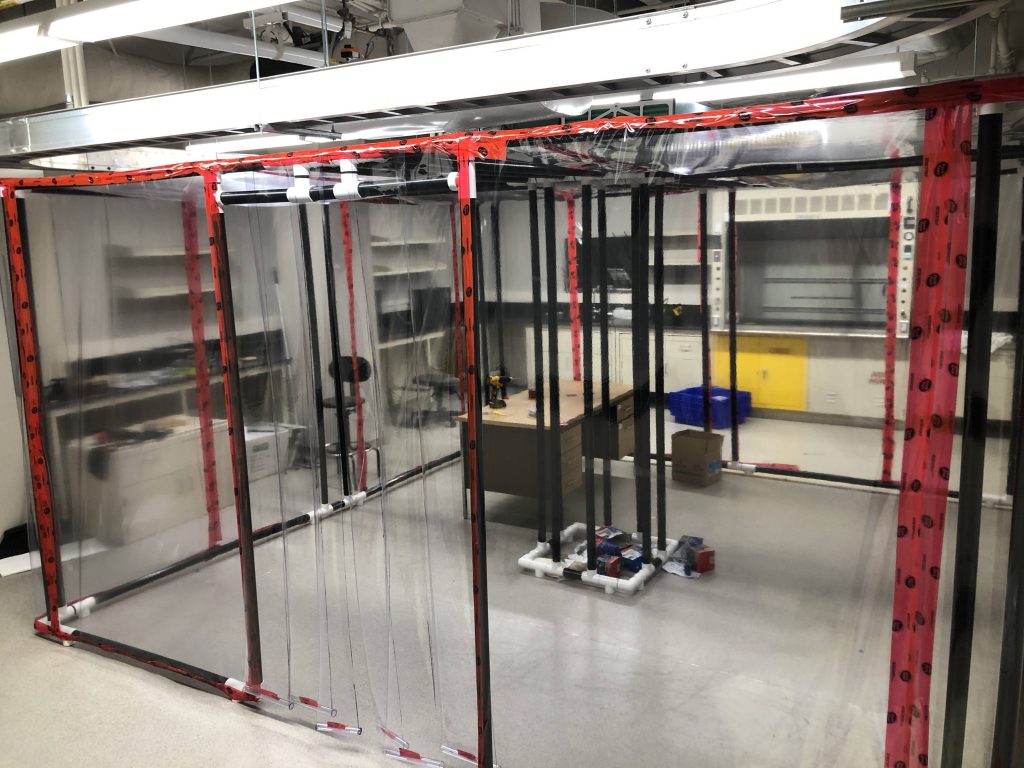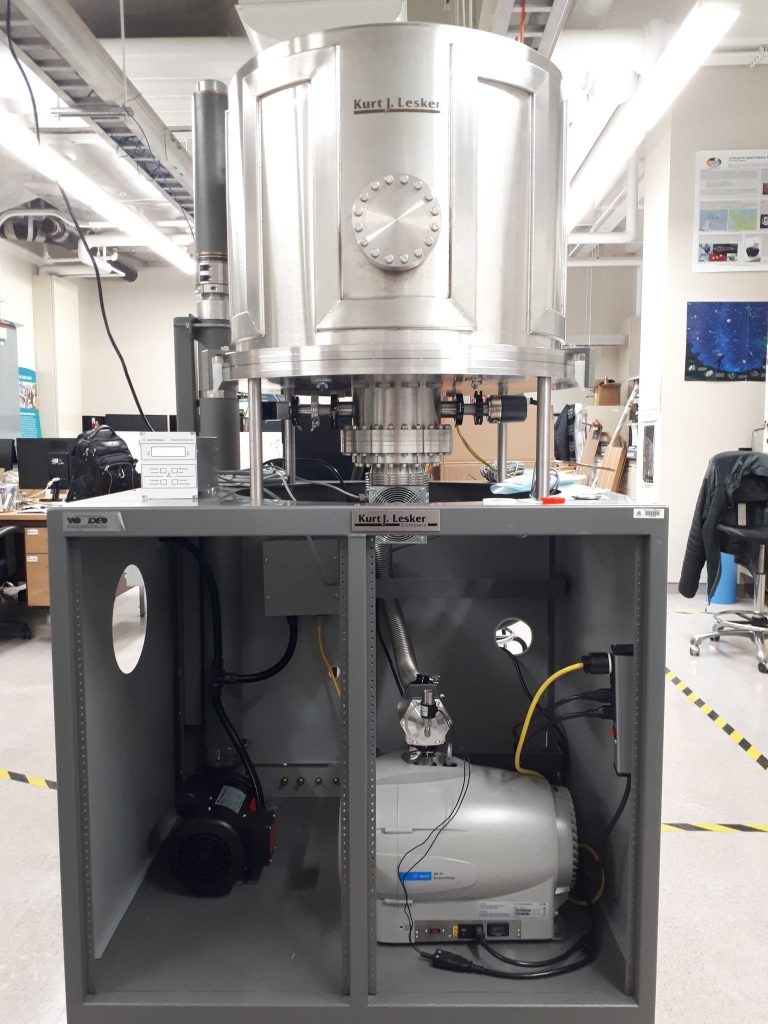Facilities
AlbertaSat is lucky to have access to many facilities and resources that allow us to accomplish our missions. Many of these facilities are located on the University of Alberta campus in Edmonton, Alberta.
If you are another student group or satellite research group looking to collaborate with AlbertaSat on facility use, please contact [email protected].
Our Project Room
Our lab facility (commonly referred to as our “Project Room” is located in the University of Alberta’s Faculty of Engineering. This space is half lab, half office space, and is home to the bulk of our research & development. That includes our prototype Flat Satellite, or “FlatSat”– a development stage of satellites where interfaces and electrical/software connections are tested before the mechanical assembly occurs.


UHF/VHF Ground Station (VA6 UAB)
AlbertaSat’s first ground station is located on the roof of the University of Alberta’s ECERF building. This ground station can uplink and downlink in UHF and VHF, and has been used for the amateur radio operations of both Ex-Alta 1 and Northern SPIRIT.
The ground station design is based on the M2 Antenna Systems models 436CP42UG (UHF) and 2MCP22 (VHF) antennas. We use the RF HamDesign SPID-RAS rotator, and RG400 coax, which runs into our indoor server room, where the ground station computer and other RF equipment is located. A livestream of the ground station can be viewed here. This livestream allows us to monitor the movement of antenna during operations.

This ground station has been used for the amateur radio operations of other satellite missions, such as York University’s DESCENT mission, and University of Toronto’s HERON Mk II mission. If you have an amateur radio mission and are interested in utilizing the AlbertaSat ground station, please contact us.
S-Band Ground Station (VE6 LRN) in collaboration with NARC
AlbertaSat has a long history of collaboration with our local Northern Alberta Radio Club (NARC), including constructing an S-Band ground station at NARC’s VE6 LRN site.
This ground station is currently limited to downlink, and was built to accommodate the larger payload files associated with Ex-Alta 2’s Iris imager. This ground station will continue to be used for the Ex-Alta 3 generation of Iris images.
The ground station design uses a parabolic dish antenna controlled by the AlfaSpid MD-01 Rotator Controller.

ISO 8 Cleanroom
The AlbertaSat cleanroom is our main spacecraft assembly space. Unlike most industrial cleanrooms, it was built using hardware store materials over the course of 4 months, and cost around $2500 CAD to build in 2021–making it feasible for use by other student groups. The basic design consists of a ABS/PVC pipe frame supporting two large industrial air filters, with vinyl sheeting wrapped around the outside, making a 4.2mx4.2m usable area. The cleanroom features bench space, a laminar flow table for high-sensitivity work such as optics, and a TVAC (see below). The final product meets ISO 8 standards reliably. The open source design was published in the SmallSat 2022 proceedings, and has been used by other satellite research organizations since.
All three Northern SPIRIT satellites were assembled and tested in our cleanroom!


Thermal Vacuum Chamber (TVAC)
To simulate the harsh space environment that satellites must survive, AlbertaSat uses a thermal vacuum chamber (TVAC). The AlbertaSat TVAC was constructed using a retrofitted bell jar, which was upgraded with new pumps and a thermal hot-plate system designed by a mechanical engineering capstone team at the University.
The TVAC can reach pressures down to approximately 10e-5 torr, and is designed to control the temperature of a 3U CubeSat from -40 to +70 degrees Celsius.


Shaker Table
AlbertaSat has also commissioned a small uniaxial shaker table for vibration testing. While this does not currently have the capacity to test a full satellite system in 3-axis, it can be used for individual components, such as the Iris imager. Vibration testing is essential to prove that the system can survive launch, which is simulated using a random vibration profile.
